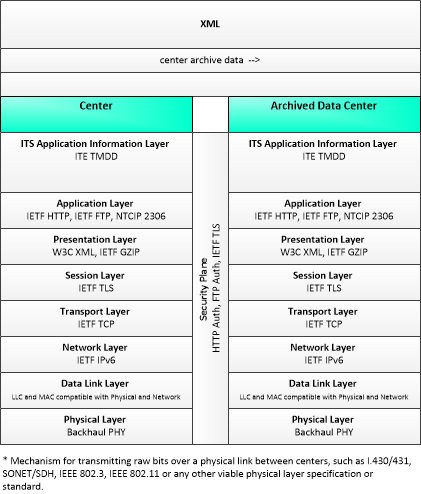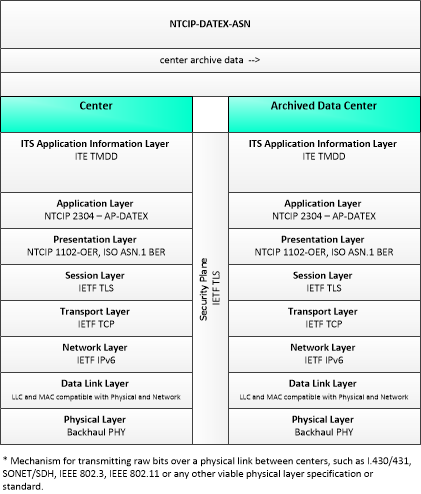Link Type: Center to Center
Center --> Archived Data Center:
center archive data
Definitions
center archive data (Information Flow): Information describing center operations and measures that reflect the impact of these operations on the transportation system. Content may include a catalog of available information, the actual information to be archived, and associated meta data that describes the archived information.
Center (Source Physical Object): This general physical object is used to model core capabilities that are common to any center.
Archived Data Center (Destination Physical Object): The 'Archived Data Center' collects, archives, manages, and distributes data generated from ITS sources for use in transportation administration, policy evaluation, safety, planning, performance monitoring, program assessment, operations, and research applications. The data received is formatted and tagged with attributes that define the data source, conditions under which it was collected, data transformations, and other information (i.e. meta data) necessary to interpret the data. The archive can fuse ITS generated data with data from non-ITS sources and other archives to generate information products utilizing data from multiple functional areas, modes, and jurisdictions. The archive prepares data products that can serve as inputs to federal, state, and local data reporting systems. The 'Archived Data Center' may reside within an operational center and provide focused access to a particular agency's data archives. Alternatively, it may operate as a distinct center that collects data from multiple agencies and sources and provides a general data warehouse service.
Included In
This Information Flow is in the following Applications:
This Information Flow is in the following Application Objects:
Communication Diagrams
The communication diagram(s) can be viewed in SVG or PNG format and the current format is SVG. Switch to PNG format.
This profile describes an alternative set of standards applicable to communications between entities using ISO TC204 WG9 DATa Exchange(DATEX). Information messages are encoded using the NTCIP Octet Encoding Rules (OER).
Characteristics
Architectural:
| Characteristic | Value |
|---|---|
| Time Context | Historical |
| Spatial Context | Regional |
| Acknowledgement | True |
| Cardinality | Unicast |
| Initiator | Destination |
Security
This information flow triple is in the following applications with the following security levels.
| Information Flow Security | |||||
|---|---|---|---|---|---|
| Application | Confidentiality | Integrity | Availability | ||
| Basis | Basis | Basis | |||
| Security levels have not been defined yet. | |||||

